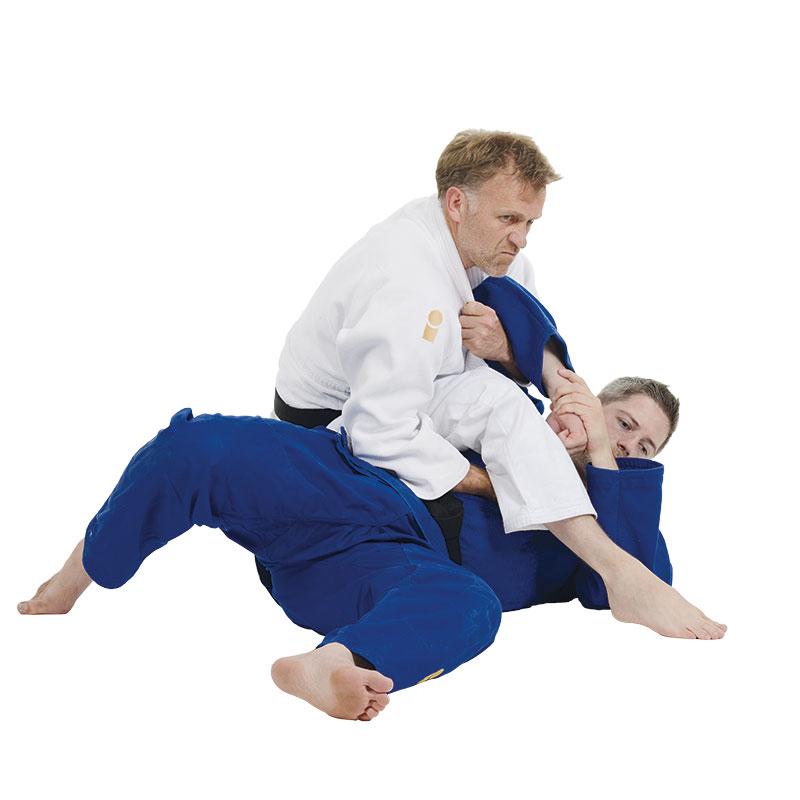Uki-gatame 浮固 (Floating Hold)
Classification: Katame-waza → Osae-komi-waza (Holding Techniques)
Uki-gatame is a less commonly used but very effective hold-down technique in which tori pins uke by positioning a leg across uke’s torso, keeping the body partially elevated—hence the name “floating hold.” The technique often emerges from an attempted arm lock (juji-gatame) that transitions into a pin when uke resists the lock.
Execution
-
Uki-gatame is typically initiated when tori is attempting juji-gatame and uke defends by clamping their arms together to prevent the elbow extension.
-
Tori releases the leg that is positioned near uke’s head and places it backward over uke’s torso, ending in a side-control-like posture.
-
The upper body is kept elevated and angled, while the chest and hips are pressed into uke.
-
One variation includes placing the left leg over uke’s neck, while the right arm controls uke’s arm—creating both a pin and a submission threat.
Biomechanics
Uki-gatame uses bodyweight, control of the arm, and an unorthodox leg position to maintain pressure on uke. By lifting the upper body and shifting the angle of control, tori reduces uke’s ability to bridge or escape while still threatening transitions into submissions.
It relies on:
-
Rotational pressure on uke’s shoulders
-
Weight distribution through the chest and hips
-
Isolation of the arm, often forcing uke into defensive postures

Escapes
-
Arm extraction and belly turn (tori):
If uke maintains a tight grip on their own arms to defend juji-gatame, tori can choose to release the attack and rotate toward uke’s body, turning belly-down into a control position or mount. -
Leg control and bridge (uke):
Uke can try to push or trap the leg of tori that lies over their body (especially the one near the head), preventing the pin and breaking posture. A strong bridge can lift tori’s shoulders, disrupting the hold-down. -
Grip peel and head movement:
By disrupting the control on the arm, moving the head toward tori’s legs, and engaging the hips, uke may be able to slip out of the pin and recover guard or turtle.
Variations & Transitions
-
Back to Juji-gatame:
From uki-gatame, tori can swing the free leg back over uke’s face to reestablish ude-hishigi-juji-gatame (cross arm lock) if uke releases their arm grip. -
Transition to Sankaku-waza:
If tori can encircle uke’s head and arm with the legs, they can trap them in the triangle position and either transition into sankaku-gatame (triangle hold) or triangle strangle (sankaku-jime). -
Pressure pinning:
In competition, uki-gatame is occasionally used to burn time while scoring osaekomi points, as it is difficult for uke to escape without significant space.
Did you know?
Despite being less common than other pins, uki-gatame is part of the official Kodokan syllabus and recognized for its versatility between pinning and submission transitions. It exemplifies the principle of ju no ri—adaptability and efficient use of force. Advanced judoka often use uki-gatame dynamically in newaza transitions, especially in response to failed armlocks or to counter defensive grips.